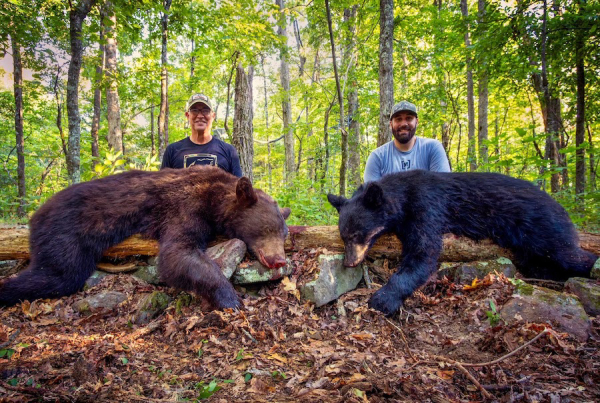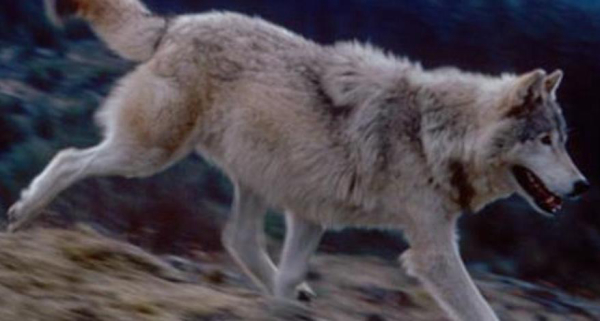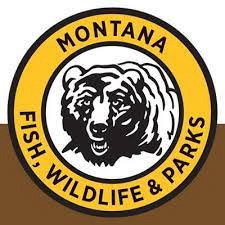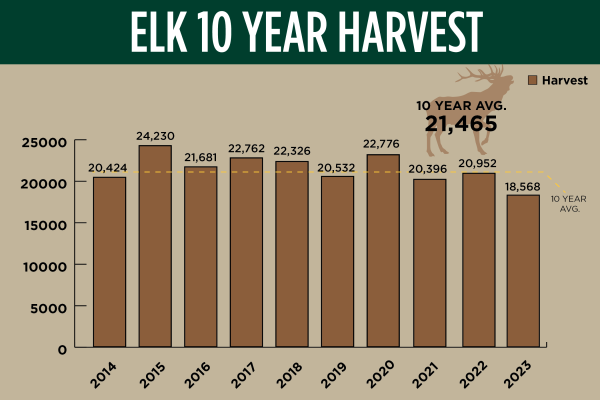Pennsylvania Bear Harvest State’s Best All-Time
Pennsylvania hunters took 4,653 black bears this past fall, setting a new state record bear harvest.
In 2018, the bear harvest was 3,153, 11th best all-time, but also the lowest bear harvest in the past 11 years. So, the overall bear harvest increased by a third from 2018 to 2019.
With a statewide bear population of about 20,000 bears over the past several years, it was a harvest increase sought by the Game Commission, which had employed the largest suite of bear-season changes ever approved in a single license year.
“There were 30 days of bear hunting across all bear seasons in 2019,” explained Mark Ternent, agency biologist. “The last time that happened was in 1931.”
Pennsylvania’s previous top bear seasons occurred in 2011, when 4,350 bears were harvested, and in 2005, when 4,164 were taken.
In recent years, bad breaks with weather, particularly on opening days, when hunter participation is typically at its highest, have kept the bear harvest down.
But in the four years prior to 2019, hunters still took more than 13,850 bears, which exemplifies the bear population’s resiliency to remain around 20,000.
Over the course of bear hunting’s three major season segments hunters took 1,629 bears in the general season; 1,340 in the muzzleloader and special firearms seasons; 1,117 in extended firearms seasons and 561 in the bear archery season. The muzzleloader, extended and archery harvests are all new record harvests, too.
“To have three independent bear seasons with harvests in excess of 1,000 is surely historic,” Ternent noted. “But when a record 202,043 hunters buy licenses and can participant in the opening days of four seasons that weren’t impacted by poor weather, there’s always a great chance for hunter success to increase.”
Opening-day harvests are typically responsible for 50 to 60 percent of a bear season harvest. When weather interferes, the season’s take suffers.
Bears were taken in 58 counties and 22 of Pennsylvania’s 23 Wildlife Management Units (WMUs).
The largest bear through all 2019 seasons is the 813-pound male taken with a rifle on the opening day of the general season in Smithfield Township, Monroe County, by Victor M. Vassalluzzo, of Kintnersville.
The heaviest bear ever taken in Pennsylvania was an 875-pounder harvested in 2010 in Middle Smithfield Township, Pike County. Since 1992, seven black bears weighing at least 800 pounds have been lawfully harvested in Pennsylvania hunting seasons.
Other large bears taken in the 2019 bear general and extended bear seasons include: a 747-pound male taken with a rifle in Wright Township, Luzerne County, by J. Kripp Jr., of Mountaintop; a 743-pound male taken with a rifle in Greene Township, Pike County, by Matthew J. Erdie Jr., of Nazareth; a 696-pound male taken with a rifle in Penn Forest Township, Carbon County, by Brian J. Borosh, of Jim Thorpe; a 661-pound male taken with a rifle in Lake Township, Wayne County, by Michael A. Biduck II, of West Abington; a 657-pound male taken with a rifle in Franklin Township, Columbia County, by Nicholas A. Podgurski, of Elysburg; a 656-pound male taken in Hanover Township, Luzerne County, by Dale J. Kobal, of Hunlock Creek; a 631-pound male taken with a muzzleloader in Porter Township, Clarion County, by Mark V. Neiswonger, of New Bethlehem; a 630-pounf male taken with archery tackle in West Penn Township, Schuylkill County, by Craig L. Moyer, of New Ringgold; and a 623-pound male taken in Beech Creek Township, Clinton County, by Mikael J. Catanese, of Sewickley.
Lycoming County finished with 284 bears to take the top county bear harvest. It was followed by Clinton and Tioga counties, both with 267. Other top counties for bear harvests in 2019 were: Huntingdon, 180; Potter, 174; Luzerne, 163; Pike, 161; Bedford, 156; Centre, 146; and Warren, 146.
Final county harvests by region (with 2018 figures in parentheses) are:
Northwest – 557 (517): Warren, 146 (72); Venango, 80 (96); Forest, 69 (70); Crawford, 65 (79); Jefferson, 65 (79); Clarion, 65 (52); Butler, 44 (26); Erie, 16 (29); Mercer, 7 (13); and Lawrence, 0 (1).
Southwest – 347 (261): Somerset, 124 (85); Fayette, 62 (58); Armstrong, 58 (33); Indiana, 42 (34); Cambria, 29 (21); Westmoreland, 29 (26); Allegheny, 2 (2); Greene, 1 (1); and Beaver, 0 (1).
Northcentral – 1,605 (989): Lycoming, 284 (159); Clinton, 267 (158); Tioga, 267 (166); Potter, 174 (109); Centre, 146 (87); McKean, 129 (67); Clearfield, 103 (87); Elk, 101 (54);Cameron, 80 (67); and Union, 54 (35).
Southcentral – 731 (474): Huntingdon, 180 (142); Bedford, 156 (80); Fulton, 80 (58); Perry, 68 (31); Mifflin, 54 (29); Franklin, 47 (26); Juniata, 42 (34); Blair, 40 (44); Cumberland, 27 (12); Snyder, 25 (7); Adams, 11 (7); and York, 1 (4).
Northeast – 1,228 (775): Luzerne, 163 (105); Pike, 161 (104); Wayne, 131 (70); Monroe, 130 (103); Bradford, 128 (96); Carbon, 88 (60); Sullivan, 87 (53); Susquehanna, 82 (46); Wyoming, 82 (40); Lackawanna, 79 (34); Columbia, 64 (38); Northumberland, 26 (24); and Montour, 7 (2).
Southeast – 185 (137): Schuylkill, 79 (50); Dauphin, 67 (48); Berks, 17 (8); Northampton, 16 (17); Lehigh, 4 (4); and Lebanon, 2 (10).
The final bear harvests by Wildlife Management Unit (with final 2018 figures in parentheses) were: WMU 1A, 20 (23); WMU 1B, 167 (161); WMU 2A, 11 (7) WMU 2B, 3 (4); WMU 2C, 292 (193); WMU 2D, 189 (155); WMU 2E, 82 (75); WMU 2F, 351 (259); WMU 2G, 712 (422); WMU 2H, 111 (73); WMU 3A, 268 (222); WMU 3B, 427 (223); WMU 3C, 224 (134); WMU 3D, 493 (323); WMU 4A, 308 (218); WMU 4B, 192 (114); WMU 4C, 254 (168); WMU 4D, 370 (252); WMU 4E, 139 (105); WMU 5A, 25 (8); WMU 5B, 1 (4); and WMU 5C, 14 (10).
Despite the size of Pennsylvania’s bear harvest, it’s still within a harvest range in which the Game Commission is comfortable, which compelled the Board of Game Commissioners to add a week to the 2020 bear archery season.
“Pennsylvania has the best bear population monitoring program in America and is a leader in bear management among eastern states,” emphasized agency Executive Director Bryan Burhans. “If season adjusts are needed in future seasons, we’ll know quickly and adjust accordingly.”







